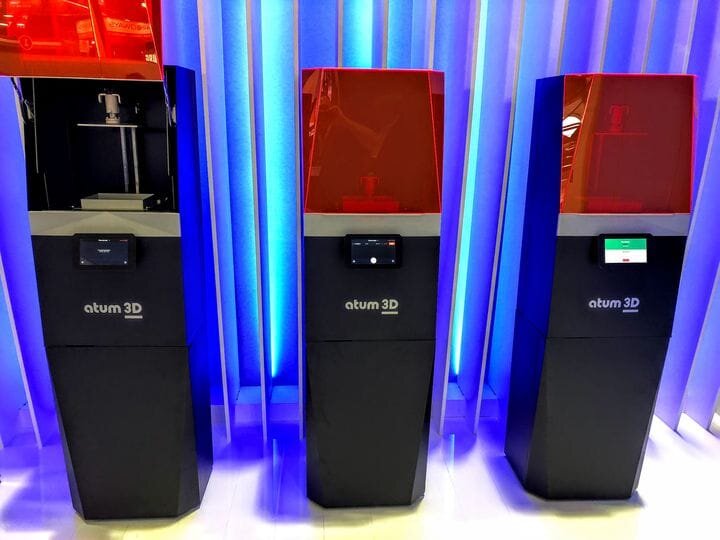![atum 3D printers on display [Source: Fabbaloo]](https://fabbaloo.com/wp-content/uploads/2020/05/image-asset_img_5eb08d1146afc.jpg)
DLP 3D printer manufacturer atum3D announced a partnership with Mitsubishi Chemical to develop specialty 3D printing resins, but what does this really mean?
Mitsubishi and atum3D
The announcement details the development of a new photopolymer resin for atum3D’s line of DLP-based 3D printers. They explain:
“Mitsubishi Chemical’s expertise in the formulation and production of UV resins and atum3D’s competence in combining chemical expertise with their 3D printing hardware and software into customer application solutions are a perfect match. By joining forces, the two companies have successfully developed a new resin for atum3D DLP (digital light processing) printers. It can solidify under a 365 nm light source and will be named Diabeam.
Diabeam possesses specific properties for heat and impact resistance which are difficult to reach for photocurable resins. In addition, it benefits from a high scratch resistance which makes it a perfect fit for long-lasting interior trim parts, covers and frames in automobile or other vehicle interiors.”
That’s good news for atum3D, certainly, but what’s really going on here?
Chemical Companies in 3D Printing
Over the past few years we have repeatedly seen arrangements where a 3D printer manufacturer has partnered with a major chemical company. Most often we’ve seen BASF announce partnerships with 3D printer manufacturers. It seems that partnering to get deep into the 3D printing industry is a key strategy for BASF.
But BASF is not the only large chemical company involved in 3D printing these days. We also see deals with Sabic, Eastman and Mitsubishi Chemical, as per the announcement from atum3D. All of these companies seem keenly interested in forging a bridge between their operations and 3D printing.
The truth is that these chemical companies are all incredibly large. BASF alone pulls in over US$47B (yes, “B”) in revenue each year. These organizations have been developing all manner of plastics and chemical compounds for decades. Each has a massive library of resin formulae of polymers, likely numbering in the thousands or even higher.
Poor 3D Printing Material Choice
To date, only a tiny fraction of these libraries have been deployed to 3D printing environments.
Even worse, most of the 3D printing materials used are pretty vanilla: ABS, PLA, PETG, etc. These are basic materials, and it’s only relatively recently that suppliers have begun to branch out to market composite materials of various types. We now see more sophisticated materials that offer advanced properties, such as added heat resistance, mechanical strength and even low particle emissions.
Most of these material innovations came from 3D printer material suppliers who had partnered with major chemical companies, rather than from the 3D printer manufacturers themselves.
Even so, there was still only a slim percentage of known materials on the 3D printer market.
3D Printer Manufacturing Partnerships
Now there seems to be a bit of a switch: there are an increasing number of 3D printer manufacturers striking deals directly with the chemical companies, as atum3D has done here.
There’s a strong reason for doing so, in my opinion.
As interest in 3D printing for industrial and professional use increases, we will see an increasing demand for more unusual and specific types of 3D printer materials. These materials, or an equivalent material, are no doubt already in the library of one or another of the major chemical companies.
These 3D printer manufacturer deals enable a manufacturer to create a kind of “mini monopoly” on a specific material. Thus it increases the likelihood a buyer would be attracted to the vendor, simply because they know they can get the material they want.
There are thousands of unique materials left to migrate to 3D printing, so expect plenty more announcements of this type.
Via atum3D

